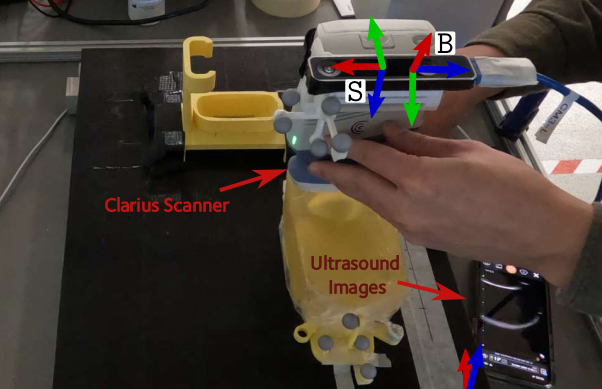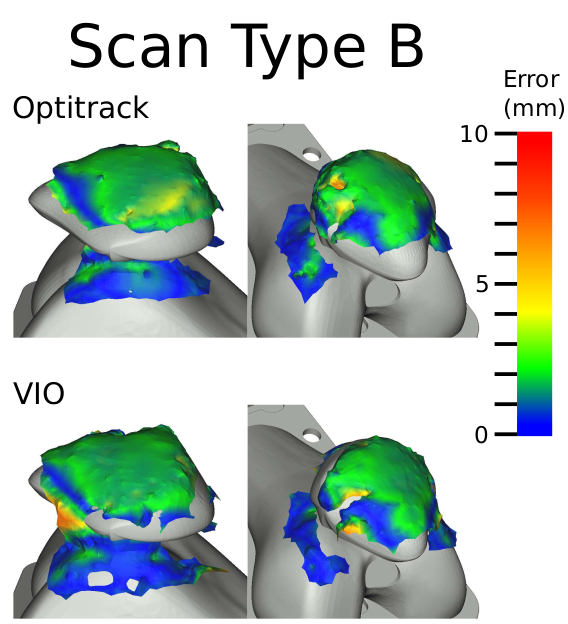3D Reconstruction with Ultrasound and Vision
3D Bone Surface Image Reconstruction from Freehand Ultrasound using Visual-Inertial Odometry and Deep Inertial Odometry
Russell Buchanan, S. Jack Tu, Marco Camurri, Stephen J. Mellon, Maurice Fallon.
2024 IEEE Symposium on Medical Measurements and Applications (MeMeA).

Abstract: One in four people can be affected by patellofemoral joint (PFJ) pain or instability, and one in five patients has chronic knee pain despite treatment for these problems. Patellar mal-tracking after arthroplasty is often suspected to cause poor outcomes and/or pain. However, conventional static imaging techniques like CT and MRI have limitations such as cost, restricted field of view, and metal artefacts, which make it difficult to observe joints dynamically and provide clinicians with an improved understanding of PFJ interactions to improve patient management and outcomes.
Combining 2D ultrasound with motion tracking for 3D reconstruction of the joint using semantic segmentation and position registration can be a solution. However, the need for expensive external infrastructure to estimate the trajectories of the scanner remains the main limitation to implementing 3D bone reconstruction from handheld ultrasound scanning clinically.
In this paper, we assess two markerless methods - Visual-Inertial Odometry (VIO) and deep learning-based inertial-only odometry - for tracking a handheld ultrasound scanner. We present a low-cost method for 3D reconstruction of bone. We compare these methods against a motion-capture baseline, and the resulting 3D reconstructions demonstrate that using VIO or deep inertial odometry can reconstruct the PFJ for visualisation and further measurements from handheld ultrasound scans. The visual-inertial method performs as well as the motion capture method, with average reconstruction errors of 1.25 mm and 1.21 mm, respectively. The VIO method is the first infrastructure-free method for 3D reconstruction of bone from handheld ultrasound scanning and has the potential to be used in a wide range of clinical applications, such as patella tracking.

Citation
@inproceedings{buchanan2024exosense,
title={3D Bone Surface Image Reconstruction from Freehand Ultrasound using Visual-Inertial Odometry and Deep Inertial Odometry},
author={Russell Buchanan and S. Jack Tu and Marco Camurri and Stephen J. Mellon and Maurice Fallon},
year={2024},
eprint={IEEE Symposium on Medical Measurements and Applications (MeMeA)},
}
Acknowledgement: This work is supported by the EPSRC ORCA Robotics Hub (EP/R026173/1), the EU H2020 Project THING (Grant ID 780883), a Royal Society University Research Fellowship (Fallon) and Versus Arthritis MedTech POC Grant (Mellon & Tu).